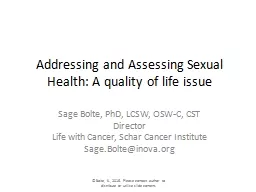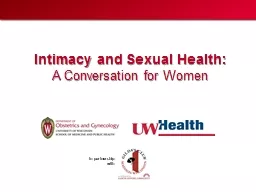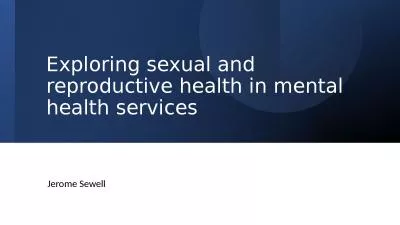PPT-Addressing and Assessing Sexual Health: A quality of life i
Author : kittie-lecroy | Published Date : 2017-09-30
Sage Bolte PhD LCSW OSWC CST Director Life with Cancer Schar Cancer Institute SageBolteinovaorg Bolte S 2016 Please contact author to distribute or utilize slide
Presentation Embed Code
Download Presentation
Download Presentation The PPT/PDF document "Addressing and Assessing Sexual Health: ..." is the property of its rightful owner. Permission is granted to download and print the materials on this website for personal, non-commercial use only, and to display it on your personal computer provided you do not modify the materials and that you retain all copyright notices contained in the materials. By downloading content from our website, you accept the terms of this agreement.
Addressing and Assessing Sexual Health: A quality of life i: Transcript
Download Rules Of Document
"Addressing and Assessing Sexual Health: A quality of life i"The content belongs to its owner. You may download and print it for personal use, without modification, and keep all copyright notices. By downloading, you agree to these terms.
Related Documents














